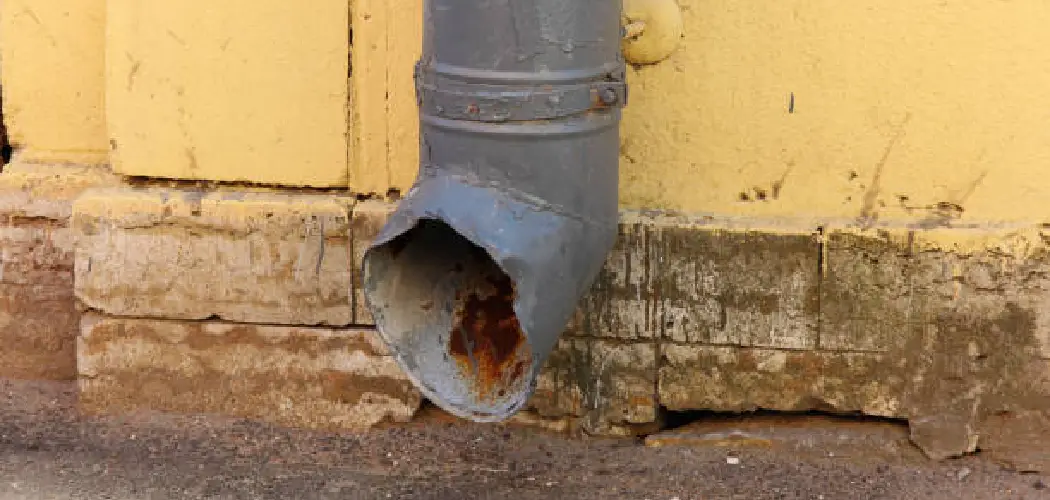Are you having water drainage problems from your neighbor’s yard? Does heavy downpours cause flooding in your garden, resulting in plants and flowers being washed away or rotting due to stagnant water? You may not be able to control the weather, but with the proper techniques and materials, it’s certainly possible to mitigate such incidents.
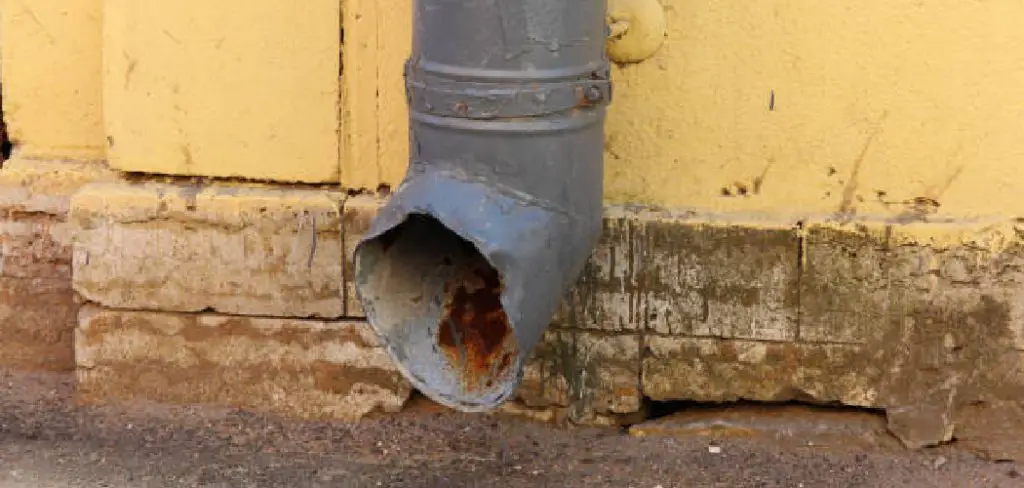
Blocking water drainage from your neighbor’s yard may sound daunting, but fear not. Therefore, this article will explore what steps can be taken to ensure adequate drainage of their water and protect your own property against flooding.
With helpful hints along the way about how best to go about blocking any unwanted flow of water, we’ll provide tips on how to block water drainage from neighbors yard.
What Will You Need?
First and foremost, you will need to obtain the necessary materials. Depending on the layout of your property and the severity of the drainage issue, this may include:
- Drainage pipes
- Grates or gutters
- Shovel
- Landscape fabric
- Rocks or pebbles
Once you have gathered all your materials, it’s time to get down to business and put a stopper in those unwelcome waterways!
10 Easy Steps on How to Block Water Drainage From Neighbors Yard
Step 1: Assess the Situation
Before you start digging trenches or laying pipes, you need to assess the situation. Observe where the water is coming from and where it is pooling in your yard. This will give you an idea of where to focus your efforts.
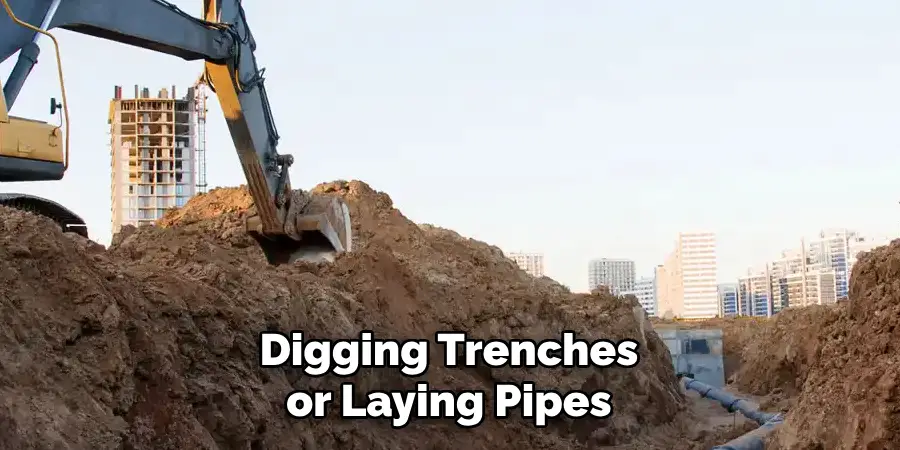
Step 2: Talk to Your Neighbor
Communication is vital in any situation, and it’s no different regarding water drainage issues. Speak with your neighbor and explain the problem you are facing. They may be unaware of how their drainage affects your property and will likely be willing to work with you on a solution. As a friendly gesture, you could even help them with their drainage system.
Step 3: Plan and Mark Your Drainage Path
The next step in blocking water drainage from your neighbor’s yard is to plan and mark the drainage path. This should direct the water from where it’s pooling to a more suitable area like a street gutter or a dry well.
Use a long string, garden hose, or landscaping paint to demarcate this path. Remember that the path should always slope downwards from the problem area to ensure gravity does the hard work of moving the water for you.
Step 4: Dig the Trench Along the Marked Path
After planning the path for water drainage, it’s time to get a little dirty. Start digging a trench along your marked route. This trench will serve as a conduit for the unwanted water, guiding it away from your yard. Generally, the trench should be about 8-10 inches wide and 18-24 inches deep. However, the depth and width may change depending on the volume of water you are dealing with.
Always maintain the slope you planned to ensure gravity can draw the water along your trench effectively. Use your shovel or a trenching tool for this purpose. Safety comes first, so use gloves and boots to protect yourself against possible injuries.
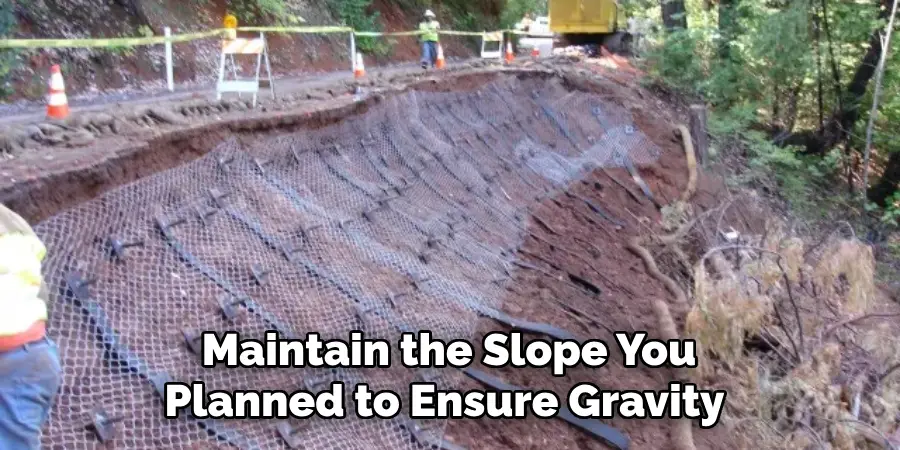
Step 5: Install the Drainage Pipe
Once your trench is dug to the appropriate depth and width, installing the drainage pipe is time. Start by lining the trench with landscape fabric as a barrier against soil and roots that could clog the pipe over time. Then, place the drainage pipe at the bottom of the trench.
Ensure the holes on the pipe face downwards to allow water to drain into the pipe. After laying the pipe, wrap the rest of the landscape fabric over it. This will offer an additional layer of protection.
Step 6: Cover the Drainage Pipe
Now that you have laid your drainage pipe and wrapped it securely with a landscape fabric, it’s time to cover it. Use rocks or pebbles to fill the trench, ensuring that the drainage pipe is fully protected. These rocks or stones will help keep the landscape fabric in place, prevent soil from getting into the pipe, and allow water to seep into the pipe from above.
Once you’ve filled the trench with rocks or pebbles, cover it with soil and compact it solidly. Be careful not to damage the pipe while doing this. If done correctly, the water from your neighbor’s yard should now be directed away from your property through this newly installed drainage system.
Step 7: Install Grates or Gutters if Needed
Sometimes, you may need additional features to support your drainage system. Grates or gutters can be useful if the water from your neighbor’s yard flows over a hard surface, like a driveway.
Install the grate over the trench on the hard surface to capture the surface runoff and direct it into your drainage pipe. If your neighbor’s downspouts are causing the issue, consider installing a gutter to catch the water and direct it towards a more appropriate area.
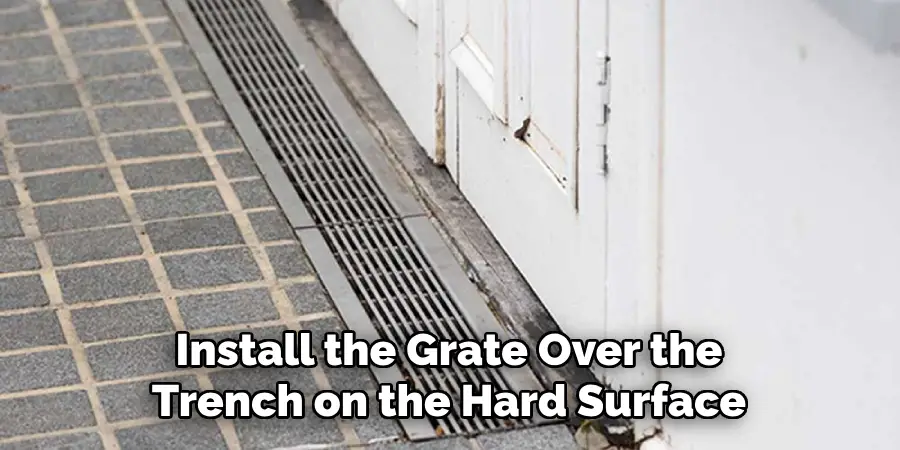
Step 8: Monitor and Maintain Your Drainage System
After installation, monitoring and maintaining your drainage system regularly is essential. Excessive rainfall or changes in the landscape can cause shifts in the water flow. Ensure the pipe, grates, or gutters remain clear and free from debris that could impede water flow.
If necessary, clean them out regularly and repair or replace any damaged parts. Remember, a well-maintained system will ensure the longevity and effectiveness of your drainage solution, keeping your property safe from flooding.
Step 9: Consult a Professional if Necessary
If the drainage issue persists despite your efforts, feel free to consult a professional. A landscape architect or a drainage contractor can provide expert advice and solutions tailored to your specific situation.
They can identify any underlying issues you might have missed and recommend improvements or alternatives to your existing system. Remember, protecting your property is worth the investment.
Step 10: Respect Boundaries and Laws
While mitigating water drainage issues in your yard, respecting property boundaries and local laws is crucial. If the drainage solution requires construction or alteration on your neighbor’s property, obtain their permission before proceeding. Furthermore, different regions may have specific regulations regarding water drainage.
Be sure to check local ordinances or seek advice from a professional to ensure that your solution complies with all laws and regulations. Remember, the goal is to solve the problem without causing legal issues or harm to your relationships with your neighbors.

By following these steps, you should be able to effectively block water drainage from your neighbor’s yard and protect your property from potential flooding.
5 Additional Tips and Tricks
- Install a Rain Garden: A rain garden is a shallow, constructed depression planted with deep-rooted native plants and grasses. It is located in your landscape to receive runoff from hard surfaces such as a roof, driveway, or patio. This can help block water drainage from your neighbor’s yard.
- Use Drainage Swales: Swales are gently sloping depressions in the landscape that carry water away. They can be naturally occurring or man-made and help reroute the water from your neighbor’s yard.
- Install a French Drain: A French drain is a slightly sloped trench filled with round gravel and a pipe that diverts water away from your house. It can be an effective method to block water drainage from your neighbor’s yard.
- Plant Water-Loving Trees and Shrubs: Planting trees and shrubs that thrive in water can also help absorb excess water flowing from your neighbor’s yard.
- Consult with a Professional: If the problem persists, it might be best to consult with a landscaping professional or an engineer. They can provide options tailored to your specific situation to block water drainage from your neighbor’s yard effectively.
With these additional tips, you can effectively block water drainage from your neighbor’s yard and prevent potential property damage.
5 Things You Should Avoid
- Ignoring the Problem: Don’t ignore water drainage issues. Over time, excess water can lead to serious structural issues, including foundation damage and soil erosion.
- Blocking Water Flow Completely: While your goal is to prevent water from your neighbor’s yard from flooding your property, completely blocking water flow can cause issues. It can create pooling water where it’s not wanted and potentially violate local regulations.
- Poorly Constructed DIY Solutions: Although it’s tempting to save money with do-it-yourself solutions, poorly constructed drainage systems can often exacerbate problems rather than solve them. Always research thoroughly or seek professional advice before attempting to create your system.
- Planting Inappropriate Flora: While water-loving plants can help absorb excess water, be mindful of what you choose to plant. Some water-loving trees have invasive roots that can damage your property’s foundations or underground pipes.
- Neglecting Maintenance: Regular maintenance is essential once you have a system in place to block water drainage from your neighbor’s yard. Debris, leaves, or dirt can clog your system and cause water to back up.
Avoiding these common mistakes can effectively block water drainage from your neighbor’s yard and protect your property.
Conclusion
All in all, the most effective way to prevent water drainage from your neighbor’s yard is to create a landscape and drainage plan that considers the area’s soil type and terrain. Diversions can also be very useful in preventing standing water. However, it’s essential to ensure these changes don’t draw more water onto your property than before.
Additionally, you should establish clear communication with your neighbor. Hence, there is a clear understanding of who is responsible for any kind of alteration or landscaping work that needs to take place.
These instructions on how to block water drainage from neighbors yard should help you keep unwanted water from leaving your neighbor’s yard and entering yours. So take action today, and your efforts will pay off as soon as it begins raining again!

